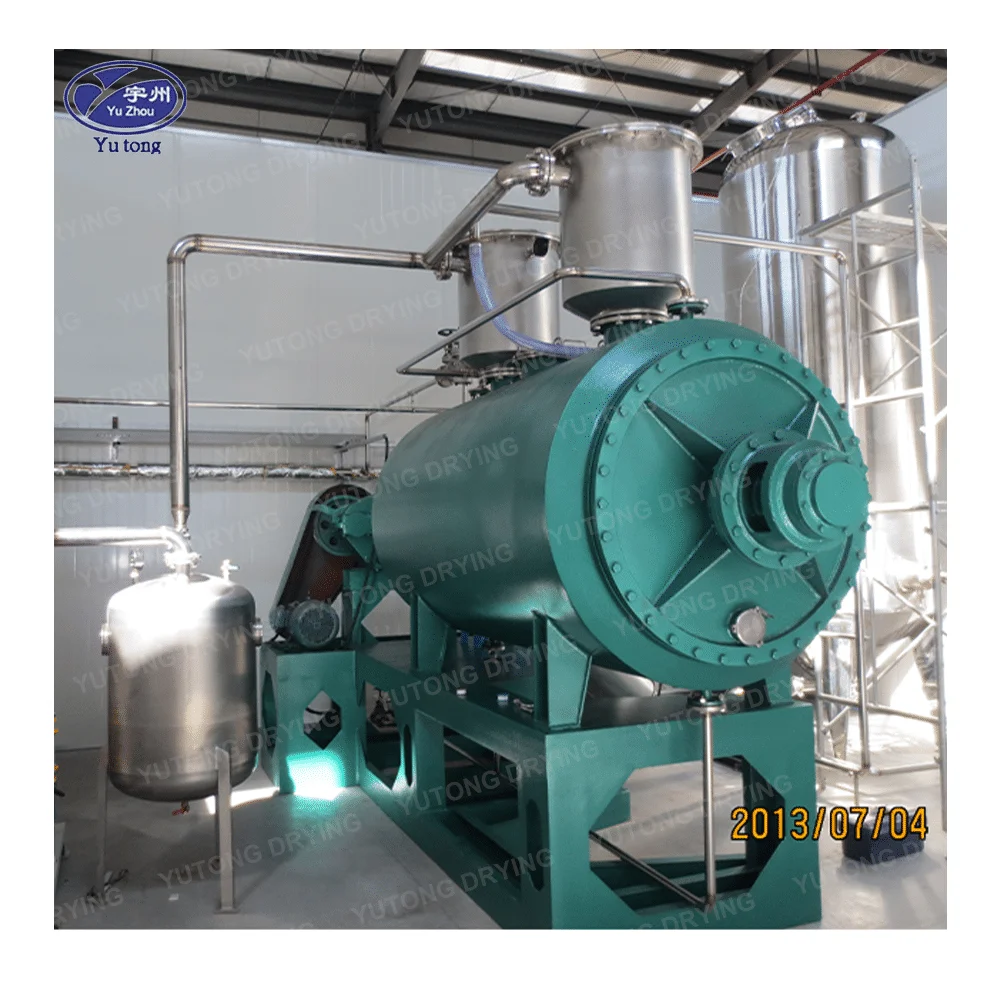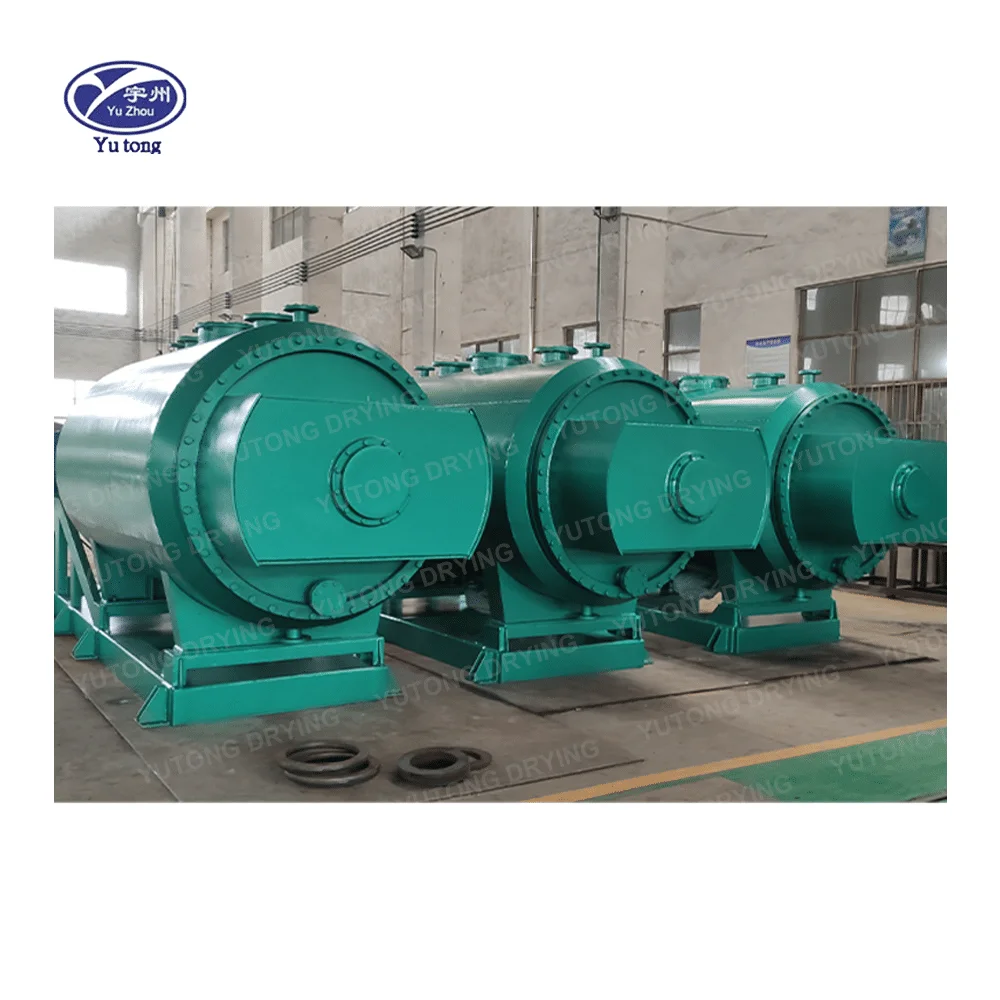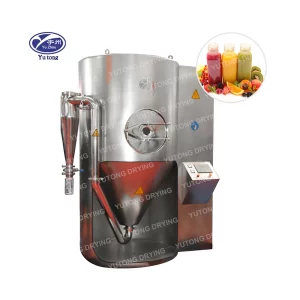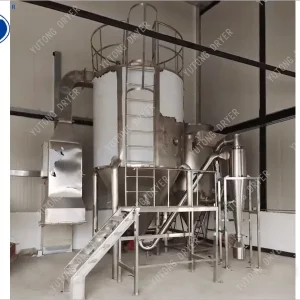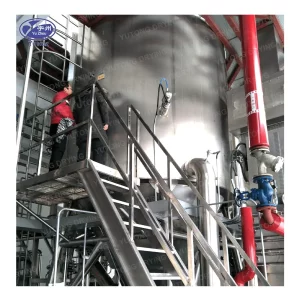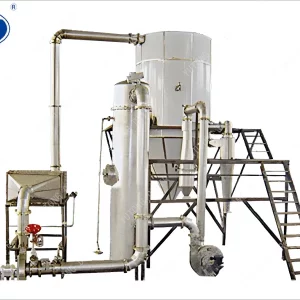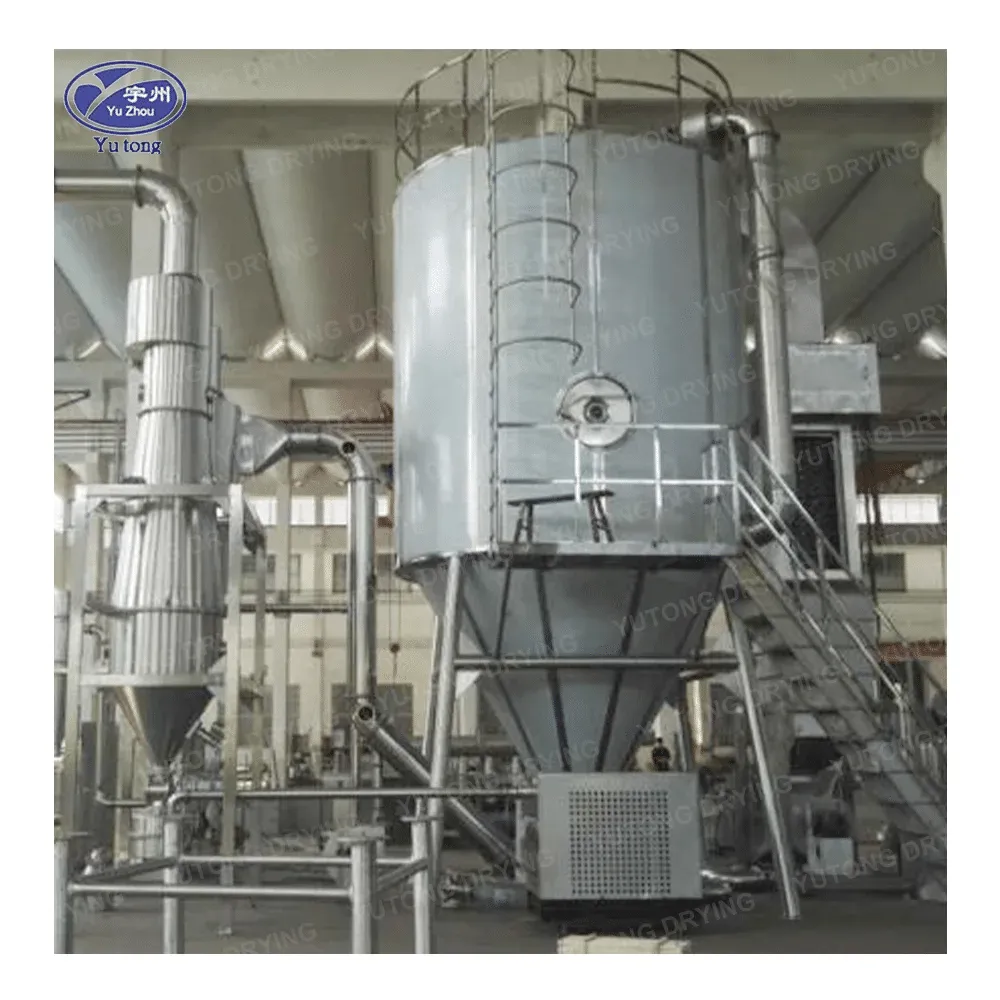Dans le domaine des applications de laboratoire, la précision et l'efficacité sont primordiales. Parmi la multitude d'équipements utilisés, les sécheurs sous vide se distinguent comme des outils essentiels pour le traitement des poudres. Cet article explore l'univers des sécheurs sous vide à haute efficacité, en explorant leurs applications, leurs avantages et la technologie qui les sous-tend.
Comprendre la technologie de séchage sous vide
La technologie de séchage sous vide est un procédé qui réduit la teneur en humidité d'un produit par application d'un vide. Cette méthode abaisse le point d'ébullition de l'eau, permettant ainsi un séchage à basse température, essentiel pour les matériaux thermosensibles. Cette technologie est largement utilisée dans les industries pharmaceutique, chimique et agroalimentaire, entre autres.
La science du séchage sous vide
Le principe fondamental du séchage sous vide repose sur la réduction de la pression atmosphérique autour d'une substance. Ce procédé abaisse considérablement le point d'ébullition du liquide contenu dans le produit. Le séchage peut ainsi s'effectuer à des températures plus basses, ce qui est particulièrement avantageux pour les substances qui se dégradent à haute température. La pression réduite accélère également le processus d'évaporation, faisant du séchage sous vide une méthode efficace pour éliminer l'humidité.
Avantages du séchage à basse température
Le séchage à basse température préserve l'intégrité des matériaux thermosensibles. De nombreux principes actifs pharmaceutiques et nutriments alimentaires sont susceptibles de se dégrader lorsqu'ils sont exposés à une chaleur élevée. En séchant à basse température, les sécheurs sous vide garantissent l'intégrité de ces composants essentiels. Cette préservation des propriétés des matériaux est essentielle au maintien de l'efficacité et de la qualité du produit final.
Applications dans tous les secteurs
La technologie de séchage sous vide ne se limite pas à une seule industrie. Sa polyvalence est évidente dans ses applications dans des secteurs tels que l'industrie pharmaceutique, où elle facilite la formulation des médicaments, et l'industrie chimique, où elle prévient les réactions indésirables. Dans l'industrie agroalimentaire, le séchage sous vide permet de préserver la saveur et les valeurs nutritionnelles, tandis qu'en cosmétique, il assure la stabilité des composés sensibles. Chaque application exige des spécificités, que le séchage sous vide prend en compte avec brio.
Types de sécheurs sous vide
Il existe différents types de sécheurs sous vide, chacun adapté à des applications spécifiques. Voici une liste des plus couramment utilisés en laboratoire :
Séchoir à vide conique Nauta
Le sécheur sous vide conique Nauta est reconnu pour sa polyvalence et son efficacité. Sa forme conique permet un séchage doux et uniforme des poudres. Ce sécheur est idéal pour les produits délicats nécessitant une manipulation soigneuse.
Conception et fonctionnalité
La conception conique unique du sécheur Nauta assure un mélange et un séchage efficaces des matériaux. Cette géométrie permet une répartition uniforme de la chaleur et un mélange doux, évitant ainsi toute surchauffe localisée. Ceci est particulièrement avantageux pour les matériaux sensibles susceptibles de s'agglutiner ou de se dégrader en cas de manipulation agressive. Le fonctionnement en douceur du système préserve l'intégrité structurelle et la qualité des poudres.
Polyvalence d'utilisation
Les sécheurs Nauta s'adaptent à divers types de produits, notamment les produits pharmaceutiques, chimiques et alimentaires en poudre. Leur capacité à traiter des lots de petite à moyenne taille les rend adaptés aux applications en laboratoire. De plus, leur conception facilite le nettoyage et l'entretien, ce qui est un atout majeur. essentiel pour garantir que la contamination croisée soit minimisée dans les environnements multi-produits.
Efficacité énergétique
L'intégration d'un système de vide réduit l'énergie nécessaire au séchage, car les températures et les pressions plus basses accélèrent le processus. Cette efficacité se traduit par des économies et une empreinte environnementale réduite, ce qui séduit les industries soucieuses de la durabilité. L'intégration de la technologie du vide à la conception Nauta témoigne d'un engagement envers la qualité des produits et l'efficacité opérationnelle.
Sécheur sous vide pour broyeur à boulets de paillasse
Ce type de sécheur combine broyage et séchage en une seule étape, ce qui le rend très efficace pour les applications en laboratoire. Il est particulièrement utile pour les petits lots de matériaux nécessitant précision et rapidité.
Combinaison de processus
Le sécheur sous vide pour broyeur à boulets de paillasse intègre broyage et séchage, simplifiant ainsi le traitement des poudres. Cette double fonctionnalité permet de réduire simultanément la taille des particules et d'éliminer l'humidité, améliorant ainsi l'efficacité. En consolidant les processus, les laboratoires économisent du temps et des ressources, ce qui est essentiel en recherche et développement où les résultats sont urgents.
Précision dans les petits lots
Pour les laboratoires traitant de petites quantités, la précision est essentielle. Ce modèle de paillasse offre un contrôle précis des paramètres de séchage, garantissant des résultats cohérents. Cette précision est essentielle à la reproductibilité des expériences et au développement de nouvelles formulations. Sa conception compacte est également avantageuse dans les laboratoires où l'espace est limité.
Rapidité et efficacité
L'intégration de la technologie du vide accélère le processus de séchage, réduisant ainsi considérablement les temps de cycle. Cette rapidité est avantageuse dans les environnements où des tests et des itérations rapides sont nécessaires. Ce séchage efficace minimise également la consommation d'énergie, offrant ainsi des avantages environnementaux et financiers.
Sécheur sous vide industriel
Les sécheurs sous vide industriels sont conçus pour les opérations à grande échelle. Robustes et capables de traiter des volumes importants de matériaux, ces machines sont indispensables aux grandes installations de production.
Construction robuste
Les sécheurs sous vide industriels sont conçus pour résister aux exigences de la production à grande échelle. Leur construction robuste garantit longévité et fiabilité, essentielles à un fonctionnement continu en milieu industriel. Leur capacité à traiter de grands volumes sans compromettre l'efficacité du séchage en fait un élément clé des applications industrielles.
Adaptabilité aux volumes élevés
Ces sécheurs sont conçus pour gérer des charges de matériaux importantes tout en maintenant une efficacité optimale. Leur évolutivité leur permet de s'adapter aux variations de production, offrant ainsi une grande flexibilité aux processus de fabrication. Cette adaptabilité est essentielle pour les industries confrontées à des volumes de production fluctuants.
Intégration avec les lignes de production
Les sécheurs sous vide industriels s'intègrent parfaitement aux lignes de production existantes. Cette intégration optimise le flux de travail et minimise les temps d'arrêt, améliorant ainsi la productivité globale. L'automatisation et le suivi des processus de séchage garantissent la régularité et la qualité des lots importants, conformément aux normes industrielles.
Lyophilisateur par pulvérisation sous vide
Un lyophilisateur par atomisation sous vide combine les avantages du séchage par atomisation et de la lyophilisation. Cette approche hybride est idéale pour préserver les principes actifs des produits pharmaceutiques et alimentaires.
Techniques de séchage hybrides
En combinant les techniques de pulvérisation et de lyophilisation, ce séchoir offre une approche unique pour éliminer l'humidité. Le séchage par pulvérisation permet une évaporation rapide de l'humidité, tandis que la lyophilisation assure la préservation des ingrédients sensibles. Cette combinaison permet d'obtenir des poudres de haute qualité aux propriétés actives préservées, essentielles pour les produits pharmaceutiques et nutraceutiques.
Conservation des principes actifs
La douceur de la lyophilisation, associée à l'efficacité du séchage par atomisation, garantit la préservation des principes actifs. Ceci est essentiel dans l'industrie pharmaceutique, où l'efficacité des médicaments est primordiale. Cette technologie est tout aussi avantageuse dans l'industrie agroalimentaire, où les valeurs nutritionnelles doivent être préservées pour respecter les normes sanitaires.
Polyvalence des applications
Le lyophilisateur par atomisation sous vide est polyvalent et convient à un large éventail d'applications, de l'agroalimentaire à l'industrie pharmaceutique. Sa capacité à traiter des matériaux délicats sans compromettre la qualité en fait un atout précieux pour la recherche et la production. L'adaptabilité de cette méthode de séchage à différents types de produits souligne son importance dans tous les secteurs.
Sécheur à ruban sous vide
Le sécheur à ruban sous vide est équipé de rubans hélicoïdaux qui mélangent et sèchent simultanément les matériaux. Cette conception garantit un séchage complet et convient à une large gamme de produits.
Mélange et séchage efficaces
Les rubans hélicoïdaux du sécheur à ruban sous vide assurent un mélange efficace et une répartition uniforme de la chaleur. Cette conception minimise le risque de points chauds susceptibles de dégrader les matériaux sensibles. Le processus simultané de mélange et de séchage améliore l'efficacité, réduisant ainsi les temps de cycle et la consommation d'énergie.
Adaptation à divers produits
La polyvalence du sécheur à ruban sous vide le rend adapté à une large gamme de produits, des produits pharmaceutiques aux produits chimiques. Sa capacité à traiter des matériaux de types et de viscosités variés en fait un choix privilégié pour les laboratoires et les sites de production. Sa conception garantit un traitement efficace même des matériaux les plus complexes.
Qualité des produits améliorée
L'action de mélange uniforme contribue à un séchage uniforme, ce qui est Essentielle au maintien de la qualité des produits. Cette uniformité est cruciale dans les industries où des caractéristiques précises sont requises. La capacité à maintenir une cohérence entre les lots renforce la fiabilité et la confiance des consommateurs dans le produit final.
Avantages de l'utilisation de sécheurs sous vide à haute efficacité
L'utilisation de sécheurs sous vide à haute efficacité dans les applications de laboratoire offre de nombreux avantages :
Conservation des matériaux sensibles à la chaleur
En séchant à basse température, les sécheurs sous vide empêchent la dégradation des composés sensibles. Cette préservation est cruciale pour les matériaux dont la chaleur peut altérer la structure chimique ou l'efficacité. Dans l'industrie pharmaceutique, par exemple, le maintien de l'intégrité des principes actifs est essentiel à la sécurité et à l'efficacité des médicaments. De même, dans l'industrie agroalimentaire, il garantit la préservation des valeurs nutritionnelles et des arômes.
Efficacité énergétique
Le fonctionnement sous vide réduit la consommation d'énergie, rendant le procédé plus rentable. Cette réduction des besoins énergétiques est avantageuse tant sur le plan économique qu'environnemental, et s'inscrit dans le cadre de pratiques durables. Cette efficacité est particulièrement avantageuse pour les opérations à grande échelle, où les économies d'énergie peuvent être substantielles. De plus, la réduction de la consommation d'énergie se traduit par une baisse des coûts d'exploitation, améliorant ainsi la rentabilité.
Qualité des produits améliorée
Le processus de séchage doux préserve les propriétés physiques et chimiques du produit. Ceci est essentiel dans les secteurs où la qualité des produits a un impact direct sur la satisfaction des consommateurs et la conformité réglementaire. En préservant les caractéristiques d'origine des matériaux, les sécheurs sous vide garantissent que les produits finis répondent à des normes de qualité strictes. Cette préservation de la qualité constitue un avantage concurrentiel sur les marchés où la différenciation des produits est essentielle.
Temps de séchage réduit
Les conditions de vide accélèrent le processus de séchage, augmentant ainsi la cadence. Ces temps de séchage accélérés sont avantageux dans les environnements de production à rythme soutenu où le temps est un facteur clé. Cette efficacité permet des délais d'exécution plus courts, répondant ainsi aux exigences des calendriers de production à haut volume. La capacité à traiter les matériaux rapidement sans compromettre la qualité constitue un avantage considérable dans les secteurs concurrentiels.
Applications dans diverses industries
Les sécheurs sous vide sont polyvalents et trouvent des applications dans de nombreux secteurs :
Industrie pharmaceutique
Dans l'industrie pharmaceutique, il est crucial de préserver l'intégrité des principes actifs. Les sécheurs sous vide garantissent le séchage des médicaments sans compromettre leur efficacité.
Assurer l'efficacité du médicament
L'industrie pharmaceutique s'appuie sur des sécheurs sous vide pour préserver l'efficacité des principes actifs. En fonctionnant à pression et température réduites, ces sécheurs préviennent la dégradation des composés fragiles. Cette préservation est essentielle pour garantir l'efficacité des médicaments tout au long de leur durée de conservation. La capacité à maintenir l'efficacité des médicaments est un élément clé de la fabrication pharmaceutique, impactant à la fois la sécurité des patients et la conformité réglementaire.
Stérilité et sécurité
Le séchage sous vide contribue également au maintien de la stérilité des produits pharmaceutiques. Le système fermé réduit le risque de contamination, un élément crucial pour les produits soumis à des normes de sécurité strictes. Cette attention portée à la stérilité est essentielle à la production de médicaments injectables et d'autres formulations sensibles. En garantissant un environnement de séchage propre, les sécheurs sous vide contribuent à la sécurité et à la qualité globales des produits pharmaceutiques.
Innovation dans la formulation des médicaments
La flexibilité des sécheurs sous vide permet l'innovation dans la formulation des médicaments. Les chercheurs peuvent expérimenter de nouveaux composés et de nouvelles techniques de séchage, menant au développement de produits pharmaceutiques de pointe. Cette innovation est cruciale dans un secteur où la demande de nouveaux traitements est constante. Les sécheurs sous vide facilitent l'expérimentation et le prototypage rapide, accélérant ainsi le processus de développement des médicaments.
Industrie chimique
Pour les produits chimiques, en particulier ceux qui sont sensibles à la chaleur, les sécheurs sous vide offrent une méthode de séchage sûre et efficace, évitant les réactions indésirables.
Manipulation de produits chimiques sensibles
Dans l'industrie chimique, de nombreuses substances sont sensibles à la chaleur et aux conditions atmosphériques. Les sécheurs sous vide offrent un environnement contrôlé où ces matériaux peuvent être séchés sans déclencher de réactions indésirables. Ce contrôle est essentiel pour maintenir la stabilité des produits chimiques essentiels à divers procédés industriels. En prévenant leur dégradation, les sécheurs sous vide garantissent que les produits chimiques répondent aux normes de qualité et fonctionnent comme prévu.
Efficacité et sécurité des processus
L'efficacité des sécheurs sous vide améliore la cadence des procédés tout en garantissant la sécurité. La réduction du risque de dégradation thermique permet des temps de traitement plus courts, améliorant ainsi la productivité globale. Cette efficacité est cruciale dans l'industrie chimique, où les calendriers de production sont souvent soumis à des contraintes de temps. De plus, la sécurité offerte par le séchage sous vide minimise les risques de réactions dangereuses, protégeant ainsi les travailleurs et les équipements.
Polyvalence dans le traitement chimique
Les sécheurs sous vide sont polyvalents et acceptent une large gamme de produits chimiques. Leur adaptabilité leur permet de traiter différentes viscosités et compositions, ce qui les rend indispensables dans le traitement chimique. Cette polyvalence est particulièrement précieuse dans les environnements de recherche et développement où diverses formulations chimiques sont testées. La possibilité de traiter divers matériaux sans compromettre la qualité ou la sécurité constitue un avantage considérable.
Industrie alimentaire
Les séchoirs sous vide sont utilisés pour sécher les produits alimentaires sans altérer leur saveur ou leur contenu nutritionnel, ce qui les rend idéaux pour la transformation des aliments de haute qualité.
Préservation de la saveur et des nutriments
Dans l'industrie agroalimentaire, il est primordial de préserver la saveur et les valeurs nutritionnelles originales des produits. Les sécheurs sous vide y parviennent en fonctionnant à basse température, évitant ainsi la perte de composés volatils qui contribuent à la saveur. Cette préservation du goût et des nutriments est essentielle pour produire des produits alimentaires de haute qualité, répondant aux attentes des consommateurs. En garantissant la conservation des caractéristiques originales des aliments, les sécheurs sous vide jouent un rôle essentiel dans l'assurance qualité.
Répondre aux demandes des consommateurs
Les consommateurs étant de plus en plus soucieux de leur santé, la demande d'aliments peu transformés a augmenté. Le séchage sous vide s'inscrit dans cette tendance en préservant les qualités naturelles des produits alimentaires. Cette capacité à répondre aux exigences des consommateurs pour des aliments sains et de qualité constitue un avantage concurrentiel sur le marché. Les séchoirs sous vide permettent aux industriels de produire des produits adaptés aux besoins des consommateurs soucieux de leur santé, sans sacrifier le goût ni la qualité.
Innovation dans les produits alimentaires
La flexibilité de la technologie de séchage sous vide facilite l'innovation dans la transformation alimentaire. Les fabricants peuvent expérimenter de nouvelles techniques et formulations de séchage, menant au développement de nouveaux produits alimentaires. Cette innovation est cruciale dans un secteur concurrentiel où la demande de nouveaux produits est constante. Les sécheurs sous vide favorisent l'expérimentation et le prototypage rapide, accélérant ainsi le développement de produits alimentaires innovants.
Industrie cosmétique
En cosmétique, les sécheurs sous vide aident à la production de poudres et de crèmes, garantissant consistance et qualité.
Cohérence dans les formulations
L'industrie cosmétique exige des formulations homogènes pour garantir la satisfaction des consommateurs. Les sécheurs sous vide offrent un environnement contrôlé permettant un séchage uniforme des ingrédients cosmétiques. Cette uniformité est essentielle au maintien de la consistance et de la qualité des poudres et des crèmes. En garantissant la stabilité et l'homogénéité des formulations, les sécheurs sous vide contribuent à la fiabilité des produits cosmétiques.
Conservation des principes actifs
De nombreux produits cosmétiques contiennent des ingrédients actifs sensibles à la chaleur et aux conditions atmosphériques. Le séchage sous vide préserve ces ingrédients, préservant ainsi leur efficacité et leur stabilité. Cette préservation est essentielle pour garantir que les produits cosmétiques offrent les bienfaits escomptés aux consommateurs. En protégeant les ingrédients actifs, les sécheurs sous vide améliorent la performance et la durée de conservation des formules cosmétiques.
Innovation dans les produits cosmétiques
La flexibilité de la technologie de séchage sous vide favorise l'innovation dans le développement de produits cosmétiques. Les chercheurs peuvent expérimenter de nouveaux ingrédients et de nouvelles techniques de séchage, aboutissant ainsi à la création de formules avancées. Cette innovation est cruciale dans un secteur où la demande de nouveaux produits est constante. Les sécheurs sous vide favorisent l'expérimentation et le prototypage rapide, accélérant ainsi le développement de produits cosmétiques innovants.
Guide d'achat : Choisir le bon sèche-linge sous vide
Lors de la sélection d'un sécheur à vide pour votre laboratoire, tenez compte des facteurs suivants :
Capacité
Déterminez le volume de matériau à traiter et choisissez un sécheur adapté. La capacité d'un sécheur sous vide est un critère crucial, car elle influence à la fois l'efficacité et la productivité. Choisir un sécheur de capacité appropriée garantit un traitement efficace des matériaux sans retards inutiles. En laboratoire, où la précision et la rapidité sont souvent essentielles, il est essentiel d'adapter la capacité du sécheur aux besoins de traitement pour des performances optimales.
Compatibilité des matériaux
Assurez-vous que le sécheur est compatible avec les matériaux que vous envisagez de traiter. La compatibilité des matériaux est un facteur clé dans le choix d'un sécheur sous vide, car chaque matériau a des exigences de séchage spécifiques. Choisir un sécheur adapté aux propriétés uniques de vos matériaux garantit des résultats de séchage optimaux. La compatibilité prend en compte la sensibilité du matériau à la chaleur, sa teneur en humidité et sa composition chimique. En garantissant la compatibilité, vous obtiendrez des résultats de séchage constants et fiables.
Contrôle de la température
Recherchez un sécheur avec un contrôle précis de la température pour protéger les produits sensibles. Le contrôle de la température est essentiel pour préserver l'intégrité des matériaux thermosensibles. Un sécheur sous vide avec un contrôle précis de la température permet d'ajuster précisément les conditions de séchage, garantissant ainsi que les matériaux ne soient pas exposés à une chaleur excessive. Cette précision est particulièrement importante dans les industries où la qualité et l'efficacité des produits sont directement liées à la sensibilité à la température. En choisissant un sécheur doté de capacités de contrôle de température robustes, vous pouvez protéger les produits sensibles de toute dégradation.
Facilité d'entretien
Choisissez un modèle facile à nettoyer et à entretenir pour garantir sa fonctionnalité à long terme. La facilité d'entretien est un critère essentiel lors du choix d'un sécheur sous vide, car elle influence à la fois l'efficacité opérationnelle et la longévité. Un sécheur facile à nettoyer et à entretenir minimise les temps d'arrêt et prolonge la durée de vie de l'équipement. Cette facilité d'entretien est particulièrement importante dans les environnements multi-produits où la contamination croisée doit être évitée. En choisissant un sécheur doté de fonctions d'entretien conviviales, vous garantissez sa fonctionnalité et sa fiabilité à long terme.
Innovations dans la technologie de séchage sous vide
Le domaine de la technologie du séchage sous vide est en constante évolution, les fabricants s'efforçant d'améliorer l'efficacité et la fonctionnalité. Parmi les innovations récentes, on peut citer :
Contrôles automatisés
Systèmes de contrôle avancés permettant des réglages et une surveillance précis du processus de séchage. L'intégration de commandes automatisées dans les sécheurs sous vide améliore la précision et l'efficacité. Ces systèmes assurent une surveillance et des réglages en temps réel, garantissant des conditions de séchage optimales à tout moment. Les commandes automatisées réduisent également le risque d'erreur humaine, contribuant ainsi à des résultats de séchage constants et fiables. Grâce à l'intégration de systèmes de contrôle avancés, les fabricants peuvent améliorer l'efficacité et la qualité de leurs produits.
Amélioration de l'efficacité énergétique
Les nouveaux modèles sont conçus pour minimiser la consommation d'énergie tout en maximisant le rendement. L'efficacité énergétique est un élément clé du développement de nouveaux sécheurs sous vide, motivée par des considérations à la fois économiques et environnementales. Des innovations récentes ont permis la création de modèles réduisant la consommation d'énergie tout en maintenant des niveaux de rendement élevés. Ces améliorations contribuent à des économies de coûts et à une réduction de l'empreinte environnementale, conformément aux pratiques durables. En améliorant l'efficacité énergétique, les fabricants peuvent atteindre l'excellence opérationnelle et la durabilité.
Conceptions compactes
Des conceptions compactes qui s'intègrent parfaitement aux environnements de laboratoire. La demande de sécheurs sous vide compacts répond à la nécessité d'optimiser l'espace en laboratoire. Des innovations récentes ont permis le développement de modèles offrant des performances élevées dans un encombrement réduit. Ces conceptions compactes permettent une utilisation optimale de l'espace de laboratoire sans compromettre les capacités de séchage. Grâce à des conceptions compactes, les fabricants peuvent répondre aux besoins des laboratoires disposant d'un espace limité, améliorant ainsi la flexibilité et la fonctionnalité.
Conclusion
Les sécheurs sous vide haute efficacité sont des outils indispensables pour les applications de laboratoire sur les poudres. Leur capacité à sécher efficacement les matériaux sensibles tout en préservant leur qualité en fait un composant essentiel dans de nombreux secteurs. En comprenant les différents types de sécheurs sous vide disponibles et leurs avantages spécifiques, vous pourrez prendre une décision éclairée et sélectionner l'équipement adapté à vos besoins de laboratoire. Que vous soyez dans le secteur pharmaceutique, chimique, agroalimentaire ou cosmétique, un sécheur sous vide haute efficacité peut optimiser vos processus de production.
Bénéficiez des avancées technologiques du séchage sous vide et exploitez son potentiel pour optimiser vos opérations de laboratoire. Avec un équipement adapté, vous pouvez obtenir une qualité de produit supérieure, une efficacité énergétique optimale et une excellence opérationnelle. Face à l'évolution constante de la technologie du séchage sous vide, rester informé des dernières innovations et des meilleures pratiques vous permettra de conserver un avantage concurrentiel dans votre secteur. En investissant dans des sécheurs sous vide haute performance, vous pouvez optimiser vos processus de laboratoire et obtenir des résultats constants et de haute qualité.

